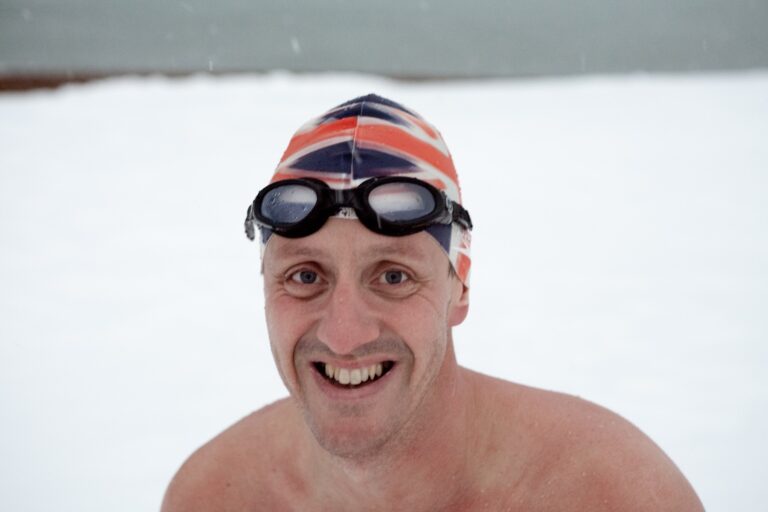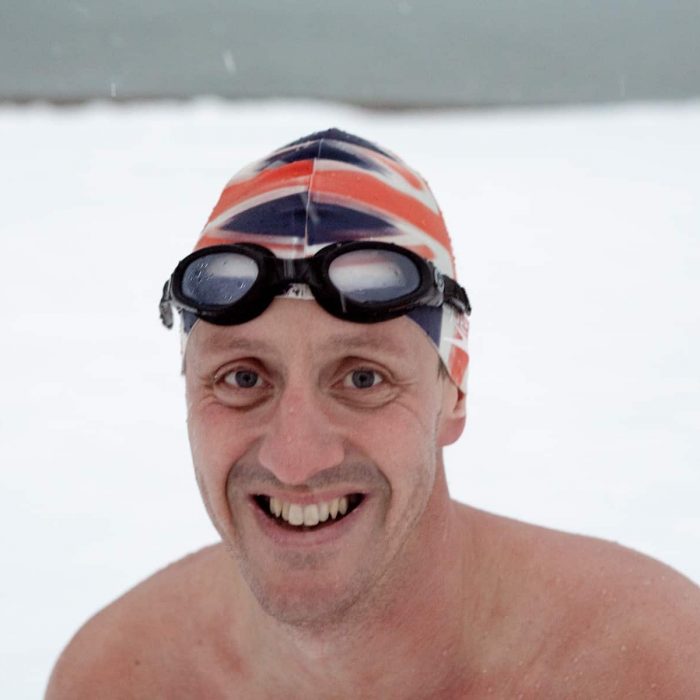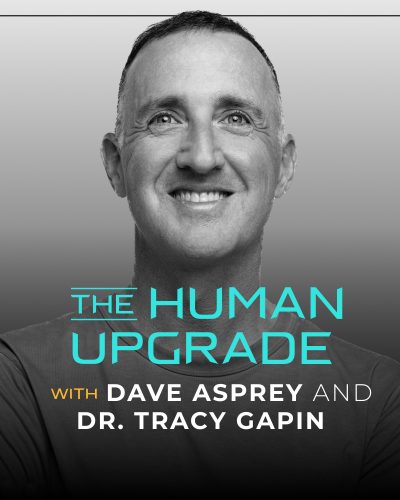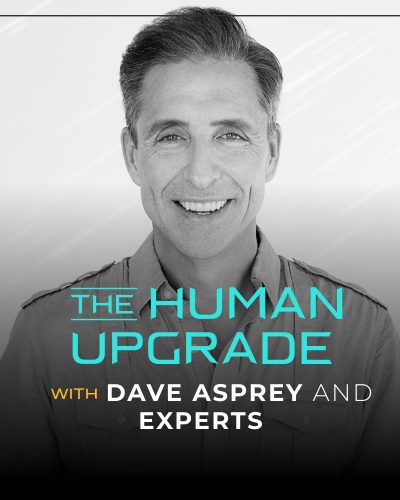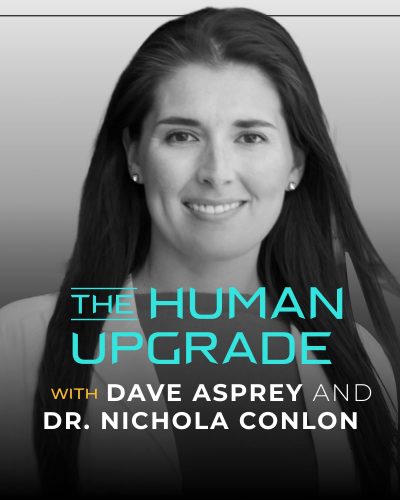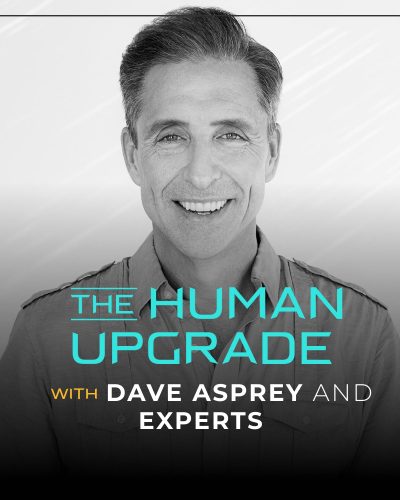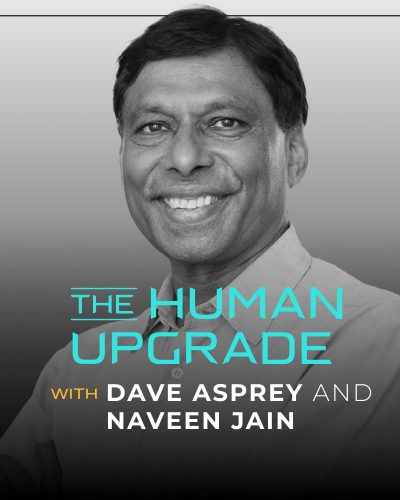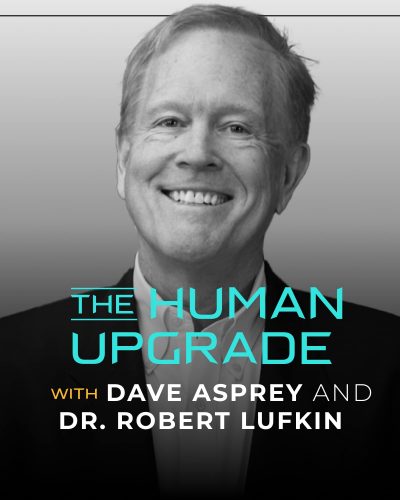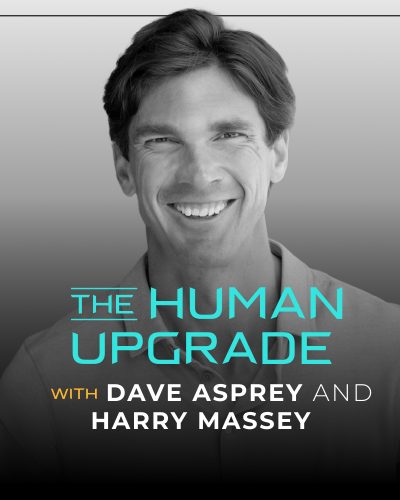In this Episode of The Human Upgrade™...
…anesthetist and researcher, Mark Harper, M.D., Ph.D., shares how the power of cold-water practices can treat depression, anxiety, PTSD, arthritis, migraines and other health conditions you may be experiencing.
Despite all the attention cold water swimming and immersion has gotten in recent years—thank you, Wim Hof—the scientific community hasn’t taken it very seriously. That’s changing now. Dr. Harper’s research goes beyond what we already know about the benefits of cold-water therapy and lays out best practices for you.
In this episode you’ll learn:
- How to safely establish your own customized practice of cold-water swimming
- The ideal plunge frequency
- How to heat your body from the inside out
- Why using saunas can optimize your plunges
- The effects of putting your face in cold water vs. just your body
- Why swimming “in the wild”—lakes, rivers, seas — benefits you even more
- How community plays a role in cold plunge practices
- And more
You’ll also learn about science and case studies found in Dr. Harper’s new book, “Chill: The Cold Water Swim Cure – A Transformative Guide to Renew Your Body and Mind.” He explains how cold water has the ability to impacts us physiologically and mentally.
As Dr. Harper shares his long-awaited evidence on cold-water’s therapeutic power to strengthen the immune system, cell regeneration, and everyday vitality, you’ll come to understand how to harness the power of cold-water swimming.
“This really does work for depression and anxiety...if this were a drug, they'd make it illegal.”
Says Dr. Mark Harper about cold-water Swimming
If you are looking to up your cold-water therapy game, you’ll get a lot of value from this episode. Dr. Harper says you can start simply, one small movement into cold water at a time: “Your rest, digest, chill out, and anti-inflammatory response comes from putting your face into the water,” he says. He then goes on to other cold-water swim tips.
Six Rules for a Safe and Enjoyable Cold-Water Swim
- Before you get in, know how you are getting out
- Warm up before you get in
- Get your body in before your head (note the “inspiratory gasp” reflex)
- Focus on your breathing
- Cold water takes your breath away!
- It almost always causes hyperventilating in a way that feels very much like a panic attack.
- Know that it will pass very soon.
- Get out, get dry, and get warm
- Better together—swim with a friend
Enjoy the show!
LISTEN: “Follow” or “subscribe” to The Human Upgrade™ with Dave Asprey on your favorite podcast platform.
REVIEW: Go to Apple Podcasts at daveasprey.com/apple and leave a (hopefully) 5-star rating and a creative review.
FEEDBACK: Got a comment, idea or question for the podcast? Submit via this form!
SOCIAL: Follow @thehumanupgradepodcast on Instagram and Facebook.
JOIN: Learn directly from Dave Asprey alongside others in a membership group: ourupgradecollective.com.
- Our Partners
- Links & Resources
- Key Notes
Experience the High Life with Infrared Therapy:
https://higherdose.com and use code HUMAN15 for 15% off your entire purchase.
Tasty Keto Bread & Chips:
https://www.uprisingfood.com/DAVE, use code DAVE to get $10 off the starter bundle
Complete Spectrum Hemp + Chinese Herbs:
https://radicalrootsherbs.com/DAVE, use code DAVE to get 10% off. Learn more about Radical Roots on these podcasts!
Book: “Chill: The Cold Water Swim Cure – A Transformative Guide to Renew Your Body and Mind”
Instagram: instagram.com/thewildswimdoctor/
Twitter: twitter.com/wildswimdoctor
Chill: chilluk.org
Mental Health Swims: www.mentalhealthswims.co.uk
Outdoor Swimming Society: www.outdoorswimmingsociety.com
Extreme Environments Research Group: www.port.ac.uk/research/research-centres-and-groups/extreme-environments-research-group
Related Resources:
- BBC: The Doctor Who Gave Up Drugs (Cold water immersion sessions in a lab preceded lake swimming to help with depression.)
- But the pool was shut. I wanted my swim, I needed my exercise. I went down and swam around the pier the next day. – 4:58
- If you’re anxious and depressed or even dealing with PTSD, a big wave of endorphins helps enormously. – 7:22
- You also adapt to cold water, but getting into cold water, there are two factors which determine the amount or the extent of this stress. The first is how cold the water is. The second is how quickly you get cold. – 9:11
- Why is sticking your face in cold water so much worse than even sticking your balls in cold water? – 17:35
- Thermal stress can be cold thermal stress and thermal stress can be hot thermal stress. – 23:15
- The best way to get warm either before or after cold exposure is from the inside out. Getting cold from the outside, warming up from the outside just doesn’t quite work. – 28:33
- What have you seen with chronic pain and cold exposure? – 32:16
- Stress is good. Inflammation is good. Inflammation is our first line of defense against bacterial attack. But what we want to do is keep that in the physiological zone, the zone that’s good for us. – 36:41
- Walk me through what you’ve seen from cold water swimming and fibromyalgia. – 39:45
- By strengthening the pulling back of the parasympathetic nervous system, you bring the sympathetic nervous system back into where it should be. I think this is why it’s so good. – 44:00
- You get this thing called autonomic conflict and that can send your heart into funny electrical rhythms, which isn’t good for you. But on the whole, if you can get in, you can get out safely. It’s pretty safe. – 46:14
- If you put it in, you keep it in five, 10 seconds and you are past that initial shock, I think that’s all you need to do. – 49:18
